![Mingus, Charles: Presents Charles Mingus To Pre Bird, Revisited <i>[Used Item]</i> (ezz-thetics by Hat Hut Records Ltd) Mingus, Charles: Presents Charles Mingus To Pre Bird, Revisited <i>[Used Item]</i> (ezz-thetics by Hat Hut Records Ltd)](https://www.teuthida.com/productImages/misc4/34502.jpg)
Three sides of Charles Mingus in this remastered reissue set: the 1961 Candid album Mingus Presents Mingus with the classic quartet of Eric Dolphy, Ted Curson and Dannie Richmond; then the Mercury release Pre-Bird from the same year, in ensembles performing the music of or influenced by Duke Ellington, along with the ambitious and brilliant through-composed work, "Half Mast Inhibition".
Out of Stock.
Quantity in Basket: None
Log In to use our Wish List
Shipping Weight: 3.00 units
EU & UK Customers:
Discogs.com can handle your VAT payments
So please order through Discogs
Sample The Album:
Charles Mingus-double bass, vocals
Eric Dolphy-alto saxophone, bass clarinet, vocals
Ted Curson-trumpet, vocals
Dannie Richmond-drums, vocals
John LaPorta-alto saxophone
Danny Bank-baritone saxophone
Charles McCracken-cello
Gunther Schuller-conduction
Robert DiDomenica-flute
Harry Schulman-oboe
George Scott-percussion
Sticks Evans-percussion
Max Roach-percussion
Paul Bley-piano, vocals
Sir Roland Hanna-piano
Bill Barron-tenor saxophone
Booker Ervin-tenor saxophone, vocals
Joe Farrell-tenor saxophone, vocals
Yusef Lateef-tenor saxophone, vocals
Charles Greenlee-trombone
Eddie Bert-trombone
Jimmy Knepper-trombone, vocals
Slide Hampton-trombone
Clark Terry-trumpet
Hobart Dotson-trumpet
Marcus Belgrave-trumpet
Richard Williams-trumpet
Don Butterfield-tuba
Lorraine Cusson-vocals
Click an artist name above to see in-stock items for that artist.
UPC: 752156116929
Label: ezz-thetics by Hat Hut Records Ltd
Catalog ID: ezz-thetics 1169
Squidco Product Code: 35153
Format: CD
Condition: VG
Released: 2024
Country: Switzerland
Packaging: Cardboard Gatefold
Recorded in New York City, on May 24th and 25th, 1960.
Charles Mingus Presents Charles Mingus originally released in 9161 as a viny LP on the Candid label with catalog code CJM 8005.
Pre-Bird originally released in 1961 as a vinyl LP on the Mercury label with catalog code SR 60627.
This is a USED (previously owned) item
"1960 was pivotal for Charles Mingus. In the previous four years, a series of recordings for Atlantic, RCA, and Columbia, established Mingus as an innovative composer, whose oral methods for conveying to his ensembles the volatile emotions represented in his works yielded thrilling performances that careened between close-order precision and raw soul-baring expression. Albums like Pithecanthropus Erectus, Tijuana Moods, and Mingus Ah Um, established Mingus as the protean giant that is now revered.
By 1960, Mingus had weathered a mental health crisis that led him to naively admit himself to the notorious Bellevue Hospital in 1958 (an episode immortalized by "Lock 'Em Up (Hellview of Bellevue)"). While incidents of aggressive, paranoidal behavior persisted, ongoing therapy provided at least some ballast. In this regard, the stability afforded by an indefinite residency at the newly opened The Showplace on West 4th Street at the beginning of 1960 was timely, as it allowed Mingus an unpressured opportunity to refine his Jazz Workshop concept.
Mingus was then impressed with the music of Ornette Coleman, his disparaging comment to Leonard Feather doubting Coleman's ability to correctly play a C major scale notwithstanding; he had sat in on piano with the saxophonist's quartet during their historic Five Spot stand just weeks before he began the 10-month Showcase run. It is therefore unsurprising that Mingus formed the quartet with Eric Dolphy, Ted Curson, and Dannie Richmond. Although pianists like Paul Bley and Jaki Byard were occasionally added - Mingus also played piano when Ahmed Abdul-Malik and Wilbur Ware and other bassists dropped in - the initial focus was on developing elastic interplay within the quartet, using a limited repertoire that included the pieces recorded for Charles Mingus Presents Charles Mingus.
The Showcase residency also allowed Mingus to cherry-pick offers for recording dates and one-off concerts. In May, Mingus assembled almost 30 musicians over two sessions for the Feather-produced Pre-Bird. Although Mingus often played with Charlie Parker, Dizzy Gillespie, and other bebop avatars beginning in the early 1950s, he considered himself an Ellington man. His intimate knowledge of Ducal literature is evident in a pair of extraordinary arrangements, each of which brilliantly juxtaposed two compositions: "Take the A Train" and Jimmy McHugh's "Exactly Like You;" and "Do Nothin' Til You Hear From Me" and "I Let a Song Go Out of My Heart." Use of Ellingtonian devices also benefits other Mingus pieces from the '40s included on the date, particularly the chromaticism of "Bemoanable Lady."
However, the most ambitious composition on the album is the through-composed "Half-Mast Inhibition," Mingus' first foray into extended forms. Penned before he turned 21, it is comprised of 18 compact, high-contrast sections reflecting Mingus' early abilities as a cellist (he was a member of the Los Angeles Junior Philharmonic Orchestra) and his interest in French Impressionist composers. While it is speculated that some parts, like the bass-doubling tuba, were added later, passages such as the brief spectral dialogue between cello and oboe and the sardonic reference to "Jingle Bells" by the tenor saxophones indicate a maturity well beyond his years. Taking roughly two decades to be recorded, "Half-Mast Inhibition" is a minor masterpiece, albeit one eclipsed by later, more sprawling works.
With much of the running time of Pre-Bird given to works influenced by Ellington and fueled by Mingus' aspirations as a composer, there was less room for the expressionism that distinguished his Atlantic recordings. "Prayer for Passive Resistance," an ecstatic performance that could have been easily slipped into albums like Blues & Roots, was the sole representative of this aspect of Mingus' music. Using a different, cosmopolitan material base, "Mingus Fingus No. 2" has comparable energy, particularly during the two-lap chase between the five trumpeters on the date. These tracks complete the composite portrait of Mingus' music presented on Pre-Bird.
During a three-week break from The Showplace in late June and early July, Mingus was a lead instigator of the Newport Rebels Festival and gave a historic concert at the Antibes Jazz Festival. An initiative of the Jazz Artists Guild, a short-lived cooperative cofounded with Max Roach, the Rebels' pushback against the conservative Newport Jazz Festival - exacerbated when Mingus discovered the disparity between his fee and that of Benny Goodman and others - provided opportunities for one-time meetings between artists from different parts of the jazz spectrum, like Ornette Coleman and Kenny Dorham. Mingus then presented The Showplace quartet plus Booker Ervin at the esteemed French festival, highlighted by a poignant reunion with Bud Powell. The importance of both events has grown with time.
Soon after Mingus returned to New York and resumed the quartet's stand at The Showplace, Candid Records was formed as a subsidiary of Andy Bleyer's Cadence label, with Nat Hentoff producing sessions. For Hentoff, already an established advocate for Mingus who helped gain his release from Bellevue, recording Mingus was a priority. He approached Mingus as The Showplace run was ending, and it proved to be not a moment too soon, as both Curson and Dolphy had tired of Mingus' rigorous rehearsals, verbal abuse, and withholding of pay, and were about to quit.
Hentoff was the quintessential hands-off producer; once tape was ready to roll, he would repair to the booth and read the papers until the session was over. Major label producers would have most likely relegated Mingus' monologues to the cutting-room floor at the first opportunity. Despite the contrivance of posing as announcements made during a set at The Showplace, Hentoff heard something authentic and valuable in Mingus' remarks, and retained them. Arguably, the immediate beneficiary of these monologues was Mingus himself; by centering him, they facilitated what remain iconic performances more than sixty years later. As similar monologues were part and parcel of experiencing the quartet month after month at The Showplace, their inclusion provides closer proximity to that experience.
Mingus' sketch-like scores for small groups in this period had a primarily catalytic function; by allowing musicians free range to shape a performance, he was able to ignite the fire rarely captured through notation. "Folk Forms No. 1" is a classic in this regard. Comparing the Candid version with the one performed at Antibes, it is clear that "Folk Forms No. 1" changed from performance to performance, proof of Mingus' concept. Oddly, the studio performance benefits from the lack of sudden surges of intensity punctuating the Antibes performance. Something of the same can be said of this version of "What Love," which was also part of the Antibes set (as was "Prayer for Passive Resistance"). On both occasions, Mingus and Dannie Richmond repeatedly flirted with shifting the performance into high gear during Mingus' engrossing dialogues with Curson and Dolphy, as well as Mingus' solo between the duets; however, the studio performance has a more intimate feel.
Both "All the Things You Could Be Now If Sigmund Freud's Wife Was Your Mother" and "Original Faubus Fables" reflect how well-oiled the quartet was at the end of The Show-place stand. Like "What Love," the former is a variation of a well-known standard, albeit one with a mine field of tempo changes, which the quartet ably navigates. The latter - so titled to avoid a contractual dispute with Columbia, for whom Mingus originally recorded the composition - finds the quartet meeting the daunting interpretative challenge of making Mingus' disdain and sarcasm ooze from the score as effectively as the septet on Mingus Ah Um.
Heard together, Charles Mingus Presents Charles Mingus and Pre Bird suggest the enormity of Charles Mingus' artistic vision. No one album encompasses it in its entirety, and perhaps not even two or three. However, these recordings, made six months apart in 1960, vividly summarized his work to date, as he headed towards to jazz's pantheon."-Bill Shoemaker, November 2023
Artist Biographies
• Show Bio for Charles Mingus "One of the most important figures in twentieth century American music, Charles Mingus was a virtuoso bass player, accomplished pianist, bandleader and composer. Born on a military base in Nogales, Arizona in 1922 and raised in Watts, California, his earliest musical influences came from the church-- choir and group singing-- and from "hearing Duke Ellington over the radio when [he] was eight years old." He studied double bass and composition in a formal way (five years with H. Rheinshagen, principal bassist of the New York Philharmonic, and compositional techniques with the legendary Lloyd Reese) while absorbing vernacular music from the great jazz masters, first-hand. His early professional experience, in the 40's, found him touring with bands like Louis Armstrong, Kid Ory and Lionel Hampton. Eventually he settled in New York where he played and recorded with the leading musicians of the 1950's-- Charlie Parker, Miles Davis, Bud Powell, Art Tatum and Duke Ellington himself. One of the few bassists to do so, Mingus quickly developed as a leader of musicians. He was also an accomplished pianist who could have made a career playing that instrument. By the mid-50's he had formed his own publishing and recording companies to protect and document his growing repertoire of original music. He also founded the "Jazz Workshop," a group which enabled young composers to have their new works performed in concert and on recordings. Mingus soon found himself at the forefront of the avant-garde. His recordings bear witness to the extraordinarily creative body of work that followed. They include: Pithecanthropus Erectus, The Clown, Tijuana Moods, Mingus Dynasty, Mingus Ah Um, The Black Saint and the Sinner Lady, Cumbia and Jazz Fusion, Let My Children Hear Music. He recorded over a hundred albums and wrote over three hundred scores. Although he wrote his first concert piece, "Half-Mast Inhibition," when he was seventeen years old, it was not recorded until twenty years later by a 22-piece orchestra with Gunther Schuller conducting. It was the presentation of "Revelations" which combined jazz and classical idioms, at the 1955 Brandeis Festival of the Creative Arts, that established him as one of the foremost jazz composers of his day. In 1971 Mingus was awarded the Slee Chair of Music and spent a semester teaching composition at the State University of New York at Buffalo. In the same year his autobiography, Beneath the Underdog, was published by Knopf. In 1972 it appeared in a Bantam paperback and was reissued after his death, in 1980, by Viking/Penguin and again by Pantheon Books, in 1991. In 1972 he also re-signed with Columbia Records. His music was performed frequently by ballet companies, and Alvin Ailey choreographed an hour program called "The Mingus Dances" during a 1972 collaboration with the Robert Joffrey Ballet Company. He toured extensively throughout Europe, Japan, Canada, South America and the United States until the end of 1977 when he was diagnosed as having a rare nerve disease, Amyotrophic Lateral Sclerosis. He was confined to a wheelchair, and although he was no longer able to write music on paper or compose at the piano, his last works were sung into a tape recorder. From the 1960's until his death in 1979 at age 56, Mingus remained in the forefront of American music. When asked to comment on his accomplishments, Mingus said that his abilities as a bassist were the result of hard work but that his talent for composition came from God. Mingus received grants from the National Endowment for the Arts, The Smithsonian Institute, and the Guggenheim Foundation (two grants). He also received an honorary degree from Brandeis and an award from Yale University. At a memorial following Mingus' death, Steve Schlesinger of the Guggenheim Foundation commented that Mingus was one of the few artists who received two grants and added: "I look forward to the day when we can transcend labels like jazz and acknowledge Charles Mingus as the major American composer that he is." The New Yorker wrote: "For sheer melodic and rhythmic and structural originality, his compositions may equal anything written in western music in the twentieth century." He died in Mexico on January 5, 1979, and his wife, Sue Graham Mingus, scattered his ashes in the Ganges River in India. Both New York City and Washington, D.C. honored him posthumously with a "Charles Mingus Day." [...]"-Reprinted in part from More than a Fake Book © 1991 Jazz Workshop, Inc. ^ Hide Bio for Charles Mingus • Show Bio for Eric Dolphy "Eric Allan Dolphy Jr. (June 20, 1928 - June 29, 1964) was an American jazz alto saxophonist, bass clarinetist and flautist. On a few occasions, he also played the clarinet and piccolo. Dolphy was one of several multi-instrumentalists to gain prominence in the same era. His use of the bass clarinet helped to establish the instrument within jazz. Dolphy extended the vocabulary and boundaries of the alto saxophone, and was among the earliest significant jazz flute soloists. His improvisational style was characterized by the use of wide intervals, in addition to employing an array of extended techniques to emulate the sounds of human voices and animals. He used melodic lines that were "angular, zigzagging from interval to interval, taking hairpin turns at unexpected junctures, making dramatic leaps from the lower to the upper register." Although Dolphy's work is sometimes classified as free jazz, his compositions and solos were often rooted in conventional (if highly abstracted) tonal bebop harmony." ^ Hide Bio for Eric Dolphy • Show Bio for Ted Curson "Theodore Curson (June 3, 1935 - November 4, 2012) was an American jazz trumpeter. Curson was born in Philadelphia. He became interested in playing trumpet after watching a newspaper salesman play a silver trumpet. Curson's father, however, wanted him to play alto saxophone like Louis Jordan. When he was ten, he gained his first trumpet. He attended Granoff School of Music in Philadelphia. At the suggestion of Miles Davis, he moved to New York in 1956. He performed and recorded with Cecil Taylor in the late 1950s and early 1960s. His composition "Tears for Dolphy" has been used in numerous films. He was featured in a profile on composer Graham Collier in the 1985 Channel 4 documentary 'Hoarded Dreams' He was a familiar face in Finland, having performed at the Pori Jazz festival every year since it began in 1966. In 2007, he performed at Finland's Independence Day Ball at the invitation of president Tarja Halonen. A longtime resident of Montclair, New Jersey, Curson died from a heart attack in the township on November 4, 2012." ^ Hide Bio for Ted Curson • Show Bio for Dannie Richmond "Charles Daniel Richmond (December 15, 1931 - March 16, 1988) was an American jazz drummer who is best known for his work with Charles Mingus. He also worked with Joe Cocker, Elton John and Mark-Almond. Richmond was born Charles Daniel Richmond on December 15, 1931, in New York City and grew up in Greensboro, North Carolina. He started playing tenor saxophone at the age of thirteen, and went on to play R&B with the Paul Williams band in 1955. His career took off when he took up the drums, which he had taught himself to play in his early twenties, through the formation of what was to be a 21-year association with Charles Mingus. Mingus biographer Brian Priestley writes that "Dannie became Mingus's equivalent to Harry Carney in the Ellington band, an indispensable ingredient of 'the Mingus sound' and a close friend as well". That association continued after Mingus' death when Richmond became the first musical director of the group Mingus Dynasty in 1980. He died of a heart attack in Harlem on March 16, 1988, at the age of 56." ^ Hide Bio for Dannie Richmond • Show Bio for Gunther Schuller "The son of German immigrants, Gunther Schuller was born in New York on November 22, 1925. His professional music career began as a horn player, performing with the American Ballet Theater, as principal horn in the Cincinnati Symphony (1943-1945) and with the Metropolitan Opera from 1945-1959. Schuller's jazz career also began as a French horn player on Miles Davis's "Birth of the Cool" recording (1949-1950). As an educator, Schuller first taught at the Manhattan School of Music from 1950-1953. From 1964-1967 Schuller held the position of Professor of Composition at Yale University. At the request of Aaron Copland, Schuller began teaching at the Berkshire Music Center (at Tanglewood) in 1963 and subsequently served as its Artistic Director from 1969-1984. From 1967-1977, Schuller served as President of the New England Conservatory where he formalized NEC's commitment to jazz by establishing the first degree-granting jazz program at a major classical conservatory in 1969. Shortly thereafter, he instituted the Third Stream department (subsequently named the Contemporary Improvisation department) to explore the regions where the two musical "streams" of classical and jazz meet and mingle (Schuller had coined the term "Third Stream" during a lecture he gave at Brandeis University in 1957). He hired the iconic Ran Blake to be the department's chair. Early jazz hires included the legendary Jaki Byard and George Russell. Along the way, Schuller increased NEC's profile among the world's great music institutions in remarkable ways. He insisted from the earliest days of his tenure that contemporary music have equal billing next to the acknowledged classical masterpieces, and that students be equally adept at performing both. He bolstered and revitalized NEC's string, piano and composition faculties, hiring very influential artists, among them Louis Krasner, Laurence Lesser, Russell Sherman, and Donald Martino. In one of Boston's most notorious periods of racial disharmony, Schuller created community outreach programs that sent young, eager musicians to bring the gift of music into some of the city's most marginalized neighborhoods. And, championing the forgotten music of a neglected American composer, he founded the New England Conservatory Ragtime Ensemble and recorded Scott Joplin: The Red Back Book, which won the 1974 Grammy Award for Best Chamber Music Performance, ignited a latter-day ragtime revival, and spurred tours across America, Russia, and to the White House. Schuller composed over 180 works, spanning all musical genres including solo works, orchestral works, chamber music, opera, and jazz. Among Schuller's orchestral works are Symphony (1965), Seven Studies of Paul Klee (1959), An Arc Ascending (1996), Four Soundscapes, and Shapes and Designs. Schuller's large scale work Of Reminiscences and Reflections was composed as a tribute to his wife of forty-nine years, Marjorie Black. In addition to composing for the standard concerto instruments - piano, violin, horn etc., Schuller also wrote concertos for instruments which had been previously neglected in the concerto repertoire such as the alto saxophone, bassoon, contrabassoon, organ, and double bass. Schuller also composed a number of works for solo ensemble with orchestra (or in some cases, band). Examples include Contrasts for Wind Quintet and Orchestra (1967), Concerto for String Quartet and Orchestra, Diptych for Brass Quintet and Concert Band (1967), and Eine kleine Posaunemusik for trombone and band (1980). Schuller wrote two operas: The Visitation (1966), based on a Kafka story; and the children's opera The Fisherman and his Wife with text by John Updike, derived from the Grimm fairy tale. Notable among Schuller's works in the chamber music genre are the String Quartet No. 3 (1986), String Quartet No. 4 (2002) and Symbiosis (1957), a piece for violin, piano, and percussion performed in conjunction with a dancer. Schuller's original jazz compositions occupy an important place in his overall oeuvre. Many of these works epitomize the Third Stream style. These include Transformation for jazz ensemble (1957), Concertino for jazz quartet and orchestra (1959), Variants on a Theme of Thelonious Monk (1960), Teardrop, and Jumpin' in the Future. In addition to his musical compositions, Schuller wrote several books of note. These include Horn Technique (1962), Early Jazz: its Roots and Musical Development(1968) and its sequel the Swing Era: the Development of Jazz, 1930-1945, as well as The Compleat Conductor (1997). Gunther Schuller also made his mark on the music publishing industry, founding Margun Music (1975) and GunMar Music (1979). Through these firms, Schuller published his own editions of ragtime music by Scott Joplin, Joseph Lamb and Eubie Blake, as well as jazz and third stream music by such artists as Charles Mingus, George Russell, Johnny Carisi, Ran Blake, and Jimmy Giuffre. (The GunMar/Margun catalogs are now part of G.Schirmer/Music Sales/AMP). A short time later, in 1980, Schuller founded the record company and label, GM. Schuller was the recipient of several prestigious awards. These include the William Shuman Award (1988) given by Columbia University, the MacArthur Foundation Genius Award (1991), a Pulitzer Prize in 1994 for his piece Of Reflections and Reminisciences, the Gold Medal for Music from the American Academy of Arts and Letters (1997), the Downbeat Lifetime Achievement Award, and an inaugural membership in the American Classical Music Hall of Fame. Schuller was named the 2007 Fromm Visiting Professor in Music Composition at Harvard University. In 2005, Schuller had previously held the position of Artist in Residence for 2005 at the University of Wisconsin. In addition, Schuller also maintained a longtime involvement with the Pro Arte Chamber Orchestra, which named him Conductor Laureate in 1990, and their Principal Guest Conductor in 1998. Gunther Sculler passed away on June 21, 2015." ^ Hide Bio for Gunther Schuller • Show Bio for Max Roach "Maxwell Lemuel Roach (January 10, 1924 - August 16, 2007) was an American jazz drummer and composer. A pioneer of bebop, he worked in many other styles of music, and is generally considered one of the most important drummers in history. He worked with many famous jazz musicians, including Coleman Hawkins, Dizzy Gillespie, Charlie Parker, Miles Davis, Duke Ellington, Thelonious Monk, Abbey Lincoln, Dinah Washington, Charles Mingus, Billy Eckstine, Stan Getz, Sonny Rollins, Eric Dolphy, and Booker Little. He was inducted into the DownBeat Hall of Fame in 1980 and the Modern Drummer Hall of Fame in 1992. Roach also co-led a pioneering quintet along with trumpeter Clifford Brown and the percussion ensemble M'Boom. He made numerous musical statements relating to the civil rights movement. [...]" ^ Hide Bio for Max Roach • Show Bio for Paul Bley "Hyman Paul Bley, CM (November 10, 1932 - January 3, 2016) was a Canadian pianist known for his contributions to the free jazz movement of the 1960s as well as his innovations and influence on trio playing and his early live performance on the Moog and Arp audio synthesizers. Bley was a long-time resident of the United States. His music has been described by Ben Ratliff of the New York Times as "deeply original and aesthetically aggressive." Bley's prolific output includes influential recordings from the 1950s through to his solo piano records of the 2000s. Bley was born in Montreal, Quebec, on November 10, 1932. His adoptive parents were Betty Marcovitch, an immigrant from Romania, and Joe Bley, owner of an embroidery factory. However, in 1993 a relative from the New York branch of the Bley family walked into Sweet Basil in NYC and informed him that his father was actually his biological parent. At age five Bley studied violin, but at age seven he decided to switch to the piano. By eleven he received a junior diploma from the McGill Conservatory in Montreal. At thirteen he formed a band which played at summer resorts in Ste. Agathe, Quebec. As a teenager he played with touring American bands, including Al Cowan's Tramp Band. In 1949, when Bley was starting his senior year of high school, Oscar Peterson asked Bley to fulfill his contract at the Alberta Lounge in Montreal. The next year Bley left Montreal for New York City and Julliard. In the 1951, on a return trip to Montreal, Bley organized the Jazz Workshop with a group of Montreal musicians. In 1953 Bley invited the bebop alto saxophonist and composer Charlie Parker to the Jazz Workshop, where he played and recorded with him. When Bley returned to New York City he hired Jackie McLean, Al Levitt and Doug Watkins to play an extended gig at the Copa City on Long Island. In 1953 the Shaw Agency booked Bley and his trio to tour with Lester Young, billed as "Lester Young and the Paul Bley Trio" in ads. He also performed with tenor saxophonist Ben Webster at that time. He then conducted for bassist Charles Mingus on the Charles Mingus and His Orchestra album. Additionally, in 1953, Mingus produced the Introducing Paul Bley album for his label, Debut Records with Mingus on bass and drummer Art Blakey . (In 1960 Bley recorded again with the Charles Mingus Group.) In 1954 Bley received a call from Chet Baker inviting him to play opposite Baker's quintet at Jazz City in Hollywood, California for the month of March. This was followed by a tour with singer Dakota Staton. Down Beat Magazine interviewed Bley for its July 13, 1955 issue. The prescient title of the article read, "PAUL BLEY, Jazz Is Just About Ready For Another Revolution." The article, reprinted in Down Beat's 50th Anniversary edition, quoted Bley as saying, "I'd like to write longer forms, I'd like to write music without a chordal center." Bley's trio with Hal Gaylor and Lennie McBrowne toured across the US in 1956, including a club in Juarez. Mexico. The tour culminated with an invitation to play a 1956 New Year's Eve gig at Lucile Ball and Desi Arnez's home in Palm Springs. During the evening, Bley collapsed on the bandstand with a bleeding ulcer and Lucy immediately took him to the Palm Springs hospital where she proceeded to pay for all of his medical care. Bley, who had met Karen Borg while she was working as a cigarette girl at Birdland in NYC, married her after she came out to meet him in Los Angeles, where she became Carla Bley. In 1957 Bley stayed in Los Angeles where he had the house band at the Hillcrest Club. By 1958 the original band, with vibe player, Dave Pike, evolved into a quintet with Bley hiring young avant garde musicians trumpet player Don Cherry, alto saxophonist Ornette Coleman, bassist Charlie Haden and drummer Billy Higgins. In the early 1960s Bley was part of "The Jimmy Giuffre 3," with Giuffre on reeds, and Steve Swallow on bass. Its repertoire included compositions by Giuffre, Bley and his now ex-wife, composer Carla Bley. The group's music moved towards chamber jazz and free jazz. The 1961 European tour of The Giuffre 3 shocked a public expecting Bebop, however the many recordings released from this tour have proven to be classics of free jazz. During the same period, Bley was touring and recording with tenor saxophonist Sonny Rollins, which culminated with the RCA Victor album Sonny Meets Hawk! with tenor saxophonist Coleman Hawkins. Bley's solo on "All The Things You Are" from this album has been called "the shot heard around the world" by Pat Metheny. In 1964 Bley was instrumental in the formation of the Jazz Composers Guild, a co-operative organization which brought together many free jazz musicians in New York: Roswell Rudd, Cecil Taylor, Archie Shepp, Carla Bley, Michael Mantler, Sun Ra, and others. The guild organized weekly concerts and created a forum for the "October Revolution" of 1964. In the late 1960s, Bley pioneered the use of the Arp and Moog synthesizers, performing live before an audience for the first time at Philharmonic Hall in New York City on December 26, 1969. This "Bley-Peacock Synthesizer Show" performance, a group with singer/composer Annette Peacock, who had written much of his personal repertoire since 1964, was followed by her playing on the recordings Dual Unity (credited to "Annette & Paul Bley") and Improvisie. The latter was a French release of two extended improvisational tracks with Bley on synthesizers, Peacock's voice and keyboards, and percussion by Dutch free jazz drummer Han Bennink, who had also appeared on part of Dual Unity. [biography continues...]" ^ Hide Bio for Paul Bley • Show Bio for Sir Roland Hanna "Sir Roland Hanna (1932-2002) was one of the major artists in jazz and one of the most flexible pianists of any generation. Born in Detroit Michigan, Roland began private piano studies with Ms. Josephine Love at an early age. After graduation from Cass Technical High School and a two-year stint in the US Army, he continued his musical studies at the Eastman and Juilliard Schools of Music. He then followed with a mega-mile career journey, performing in concert halls and clubs in the major cities of the world. He was knighted, in 1970, by then President William V.S. Tubman of Liberia for humanitarian services to that country. Sir Roland was a pianist who performed solo; contributed meaningfully to orchestras, bands, and small groups; and provided sensitive, sympathetic accompaniment to such artists as the late Sarah Vaughn (for whom he was musical director),Carmen McRae, and Al Hibbler. As a soloist, his finely tuned sense of time and Rock-of-Gibraltar left hand enabled him to create, without assistance, performances of melodic, harmonic and rhythmic excitement. As an ensemble player, his individuality displayed musical talent that had been honed and refined with years of experience. His experience included almost every aspect of music and occurred in such disparate contexts as The Benny Goodman Big Band, Charles Mingus experimental groups, The Eastman Symphony Orchestra, The Thad Jones-Mel Lewis Orchestra, The New York Jazz Quartet, The American Composers Orchestra, The Lincoln Center and Smithsonian Jazz Orchestras, The Detroit Symphony Orchestra, and The National Symphony Orchestra. In addition to an active itinerary that carried him to major clubs and auditoriums throughout the United States, Europe and Japan, the 1990's provided the opportunity to return to his native Detroit as guest soloist with the Detroit Symphony Orchestra in performance of his composition, "Oasis," a work for piano and orchestra. Previous performances of this work included its premiere by the Eastman Symphony Orchestra and the Swedish Symphony Orchestra of Norrkoping. He also performed Duke Ellington's "New World a comin'" and George Gershwin's "Rhapsody in Blue" as featured soloist with The National Symphony Orchestra in Washington, DC. The pianist and composer was the honouree of the 23rd annual Paradise Valley Jazz party in Phoenix, Arizona on April 15 and 16, 2000. In addition to his performance and recording endeavors, Sir Roland was also a prolific writer. His writings display the same talent, creativity, and versatility demonstrated in his performances. A catalogue of over 400 compositions include not only works for standard jazz ensembles recorded by him and other recognised jazz artists, it also includes trios for cello, flute, and french horn, as well as larger works for piano and orchestra. Sir Roland's writing incorporates a mixture of jazz and classical elements: a style often referred to as Classical Jazz. His works also include a jazz ballet for jazz orchestra and strings, commissioned by the BalletMet of Columbus, Ohio and choreographed by Graciela Daniele. The ballet, "My name Is Jasmine But They Call Me Jaz," had its premiere at the Ohio Theatre in that city in April 1992 and continued as part of the company's repertoire. A four-movement "Sonata For Chamber Trio and Jazz Piano," was recorded on Angel Records in 1994; and, in l996 His "Sonata For Piano and Violin," commissioned by The Library Of Congress, premiered in Washington, DC, choreographed by Danny Buraczeski and the Jazzdance dance troupe. Expanded in 2000 to include cello, the work was performed by the New York Philomusica Chamber Ensemble and the Sanford Allen Chamber Ensemble. While Sir Roland had some 50-plus albums to his credit, in 1997 as his way of "giving back," with his wife, Ramona Hanna, he developed the Rmi label to focus on a series of recordings presenting brilliant new artists under the signature logo, "Sir Roland Hanna presents" The first of these: "Yoshio Aomori with Chris Roselli: I Love Bebop:" the second, "Michael Hanna: Family and Friends:" and the third, "Hideaki Aomori: Young Man With A Horn. Still to be released, "Jeb Patton plays Sir Roland Hanna." Along with his performance and recording schedule throughout the world, Sir Roland was a tenured professor at the Aaron Copland School of Music, Queens College, The City University of New York. At the memorial concert at Queens College in honour and memory of Professor Hanna, friend, colleague and Professor Emeritus Jimmy Heath stated that no matter what Sir Roland Hanna did, or how he did it, he was always "raising the bar." This is to be the mission of the Sir Roland Hanna Foundation to be set up in his name and legacy." ^ Hide Bio for Sir Roland Hanna • Show Bio for Booker Ervin "Booker Telleferro Ervin II (October 31, 1930 - August 31, 1970) was an American tenor saxophone player. His tenor playing was characterised by a strong, tough sound and blues/gospel phrasing. He is remembered for his association with bassist Charles Mingus. Ervin was born in Denison, Texas, United States. He first learned to play trombone at a young age from his father, who played the instrument with Buddy Tate. After leaving school, Ervin joined the United States Air Force, stationed in Okinawa, Japan, during which time he taught himself tenor saxophone. After completing his service in 1953, he studied at Berklee College of Music in Boston, Massachusetts. Moving to Tulsa in 1954, he played with the band of Ernie Fields. After stays in Denver and Pittsburgh, Ervin moved to New York City in spring 1958, initially working a day job and playing jam sessions at night. Ervin then worked with Charles Mingus regularly from late 1958 to 1960, rejoining various outfits led by the bassist at various times up to autumn 1964, when he departed for Europe. During the mid-1960s, Ervin led his own quartet, recording for Prestige Records with, among others, ex-Mingus associate pianist Jaki Byard, along with bassist Richard Davis and Alan Dawson on drums. Ervin later recorded for Blue Note Records and played with pianist Randy Weston, with whom he recorded between 1963 and 1966. Weston said: "Booker Ervin, for me, was on the same level as John Coltrane. He was a completely original saxophonist.... He was a master.... 'African Cookbook', which I composed back in the early '60s, was partly named after Booker because we (musicians) used to call him 'Book,' and we would say, 'Cook, Book.' Sometimes when he was playing we'd shout, 'Cook, Book, cook.' And the melody of 'African Cookbook' was based upon Booker Ervin's sound, a sound like the north of Africa. He would kind of take those notes and make them weave hypnotically. So, actually the African Cookbook was influenced by Booker Ervin." Between October 1964 to summer 1966, Ervin worked and lived in Europe, playing gigs in France, Spain, Italy, Germany, Norway, Sweden, Denmark and The Netherlands. Basing himself in Barcelona, Spain, he featured regularly at the city's Jamboree Club. He recorded and broadcast while overseas, making albums with his own quartet, Dexter Gordon and Catalan vocalist Núria Feliu, featuring on various radio programmes and appearing at several jazz festivals, including a guest slot at the 1965 Berlin Jazz Festival, during which he performed a 25-minute improvisation. This performance was issued as "Blues For You" on the album Lament For Booker Ervin (Enja Records) in 1977. Following his return to the United States in summer 1966, Ervin led his own groups in jazz clubs throughout the country, and appeared at both the Newport Jazz Festival (1967) and the Monterey Jazz Festival (1966) performing with Randy Weston; a recording of their performance was issued on CD in 1994. In 1968, Ervin again appeared at clubs and festivals in Scandinavia, broadcasting with the Danish Radio Big Band. He recorded again for Prestige, but in late 1966 was signed to West Coast label, Pacific Jazz, for whom he taped two albums, Structurally Sound and Booker 'n' Brass (1967), before switching to Blue Note. Ervin recorded two Blue Note albums under his own name, In Between and Tex Book Tenor, the latter going unissued during his lifetime, initially being released in the 1970s as part of a double album shared with recordings (on which Ervin features) made under the leadership of Horace Parlan (Back from the Gig). In 2005, Blue Note issued as single CD of Tex Book Tenor in its limited edition Connoisseur series. Ervin's final recorded appearance occurred in January 1969, when he guested on a further Prestige album headed by teenage multi-instrumentalist Eric Kloss. Ervin died of kidney disease in New York City in 1970, aged 39. Most biographical accounts of Ervin's death give an incorrect date. His gravestone in The National Cemetery, East Farmingdale, New York, clearly shows the date as August 31, 1970. In 2017, Ervin was the subject of a mini-biography written by English saxophonist and author Simon Spillett, published as part of an anthology package titled The Good Book (Acrobat Records)." ^ Hide Bio for Booker Ervin • Show Bio for Joe Farrell "Joseph Carl Firrantello (December 16, 1937 - January 10, 1986), known as Joe Farrell, was an American jazz multi-instrumentalist who primarily performed as a saxophonist and flutist. He is best known for a series of albums under his own name on the CTI record label and for playing in the initial incarnation of Chick Corea's Return to Forever. Farrell was born in Chicago Heights, Illinois. As a child, Farrell began playing the flute and clarinet. After graduating from the University of Illinois at Urbana-Champaign in 1959, he moved to New York City to work as a freelance musician. He joined the Ralph Marterie Band in 1957 and later played with Maynard Ferguson and The Thad Jones/ Mel Lewis Orchestra. He also recorded with Charles Mingus, Andrew Hill, Jaki Byard, Players Association and Elvin Jones. After the death of John Coltrane, Elvin Jones formed a pianoless trio with Jimmy Garrison and Farrell, recording two albums for Blue Note in 1968. In the late 1960s and throughout the 1970s, Farrell performed with Chick Corea and Return to Forever. He is the flutist on the original recording of the Corea-penned jazz standard "Spain." He did numerous sessions and contributed a flute solo to Aretha Franklin's 1973 hit "Until You Come Back to Me (That's What I'm Gonna Do)". The Santana track "When I Look into Your Eyes" (from Welcome ) includes prominent flute solos from Farrell. During this period, he also contributed tenor saxophone and oboe solos to Hall & Oates' Abandoned Luncheonette (1973). Some of the most famous funk singles of James Brown feature Farrell as a part of the horn section. In 1976, Joe recorded a duo album with George Benson called Benson & Farrell on CTI Records. Farrell recorded Flute Talk with Sam Most in 1979, which was billed as a duet of the world's two greatest jazz flutists. Farrell performs with Brazilian percussionist Airto and Airto's wife Flora Purim on the album Three-Way Mirror. A message on the CD jacket dedicates the 1987 album to Farrell and states it contains his final recordings. Farrell died of myelodysplastic syndrome (MDS) in Duarte, California, on January 10, 1986, at the age of 48." ^ Hide Bio for Joe Farrell • Show Bio for Yusef Lateef "Yusef Lateef was a Grammy Award-winning composer, performer, recording artist, author, visual artist, educator and philosopher who was a major force on the international musical scene for more than six decades. In recognition of his many contributions to the world of music, he was named an American Jazz Master in the year 2010 by the National Endowment for the Arts. Until his passing on December 23, 2013 at age 93, Yusef remained vital and active as a touring and recording artist, composer and educator. Yusef Lateef is universally acknowledged as one of the greatest masters and innovators in the African American tradition of autophysiopsychic music - that which comes from one's spiritual, physical and emotional self. As a virtuoso on a broad spectrum of reed instruments - tenor saxophone, flute, oboe, bamboo flute, shanai, shofar, argol, sarewa, and taiwan koto - Yusef Lateef introduced delightful new sounds and blends of tone colors to audiences all over the world, and he incorporated the sounds of many countries into his own music. As a result, he is considered a pioneer in what is known today as "world music." As a composer, Yusef Lateef compiled a catalogue of works not only for the quartets and quintets he led, but for symphony and chamber orchestras, stage bands, small ensembles, vocalists, choruses, and various solo instrumental compositions. His extended works have been performed by the WDR (Cologne), NDR (Hamburg), Atlanta, Augusta and Detroit Symphony Orchestras, the Symphony of the New World, Eternal Wind, the GO Organic Orchestra, and the New Century Players from California Insitute of the Arts. In 1987 he won a Grammy Award for his recording of "Yusef Lateef's Little Symphony," on which he performed all the parts. His later extended works include a woodwind quintet, his Symphony No.2, and a concerto for piano and orchestra. As an educator, Yusef devoted much of his life to exploring the methodology of autophysiopsychic music in various cultures and passing what he learned on to new generations of students. He was an emeritus Five Colleges professor at the University of Massachusetts in Amherst, MA, from which he was awarded a Ph.D. in Education in 1975. His doctoral dissertation was entitled "An Overview of Western and Islamic Education." In 2007 he was named University of Massachusetts' "Artist of the Year." As an author, Yusef Lateef published two novellas, "A Night in the Garden of Love" and "Another Avenue"; two collections of short stories, "Spheres" and "Rain Shapes;" and his autobiography, "The Gentle Giant" written in collaboration with Herb Boyd In his later years Yusef exhibited his paintings and drawings at various art galleries." ^ Hide Bio for Yusef Lateef • Show Bio for Jimmy Knepper "James Minter Knepper (November 22, 1927 - June 14, 2003) was an American jazz trombonist. In addition to his own recordings as leader, Knepper performed and recorded with Charlie Barnet, Woody Herman, Claude Thornhill, Stan Kenton, Benny Goodman, Gil Evans, Thad Jones and Mel Lewis, Toshiko Akiyoshi and Lew Tabackin, and, most famously, Charles Mingus in the late 1950s and early 1960s. Knepper died in 2003 of complications of Parkinson's disease. Knepper was born in Los Angeles, California, United States, the second son of a nurse and a police officer. His parents divorced shortly after his birth, and his mother had to take her abusive husband to court in order to get child support. He and his older brother, Robert, were sent to several boarding and military schools, Page Military Academy and St. John's Military Academy, while their mother worked. He picked up his first instrument, an alto horn, at the age of six while he was a pupil there. His first teacher persuaded him to put aside the alto and pick up the trombone because, as he said, he had a "trombone mouth". He played his first professional gigs in Los Angeles, and traveled to Spokane, Washington, at the age of 15. He graduated high school, and later attended classes at Los Angeles Community College. Knepper married Maxine Helen Fields, a trumpet player with the all-female jazz band the International Sweethearts of Rhythm on May 8, 1954, at a civil ceremony in Tucson, Arizona, while he was on a tour with the Maynard Ferguson Band. They had two children, a daughter, Robin Reid Knepper Mahonen, and a son, Timothy Jay Knepper, who predeceased him. Knepper chose the names "Robin" and "Jay" to honor his idol, Charlie Parker, whom the jazz world knew as "Bird". He had four grandchildren. In 1959, the U.S. State Department funded a trip for bandleader Herbie Mann to visit Africa, after they heard his version of "African Suite." In a stroke of serendipity, Knepper replaced Willie Dennis as trombonist in the band for this tour. The 14-week tour took place from December 31 1959 to April 5, 1960. The musicians were: Herbie Mann, bandleader, flute and sax; Johnny Rae, vibist and arranger; Don Payne, bass; Doc Cheatham, trumpet; Jimmy Knepper, trombone; Carlos "Patato" Valdes, conguero; Jose Mangual, bongos. Destinations listed on official itinerary: Sierra Leone, Liberia, Nigeria, Mozambique, Rhodesia, Tanganyika, Kenya, Ethiopia, Sudan, Morocco, Tunisia. Knepper documented this tour meticulously in a series of letters he sent home to his wife, Maxine, his daughter, Robin, and his son, Timothy. These letters were recently found carefully preserved in a dusty box in the attic of the family home, and have now been transcribed by his daughter. They provide a fascinating glimpse into the inner circles of a notable piece of jazz history, and the life of a touring musician, who was also a devoted family man. He paints vivid portraits of the personal life of the musicians he worked with, and his descriptions of the Africa's landscapes and people provide a vivid portrait of an era in which there were few civil rights for Africans in their own lands. Knepper's daughter is hoping to publish these letters. In 1962, Knepper toured the Soviet Union with Benny Goodman's Big Band, as part of a cultural exchange during the Cold War, in which the Bolshoi Ballet also came to the US. This groundbreaking yet disastrous tour was also documented in Knepper's letters. Knepper also played in the pit orchestra through the entire run of the Broadway show Funny Girl, with Barbra Streisand, and later, Mimi Hines. After seventeen previews, the Broadway production opened on March 26, 1964, at the Winter Garden Theatre, subsequently transferring to the Majestic Theatre and the Broadway Theatre to complete its total run of 1,348 performances. In 1967 and 1968, he played in the pit orchestra at the Mark Hellinger Theater for An Evening with Marlene Dietrich, for which Dietrich received a Tony Award in 1968. He also appeared on and off Broadway in On Your Toes, and The Me Nobody Knows. While he was playing Funny Girl, Knepper became a member of the Thad Jones/Mel Lewis Orchestra, a big band formed by trumpeter Thad Jones and drummer Mel Lewis around 1965, which began the 40-year tradition of Monday night jazz shows at the Village Vanguard in New York's Greenwich Village. The band performed for twelve years in its original incarnation, but since the death of Lewis in 1990 it has been known as the Vanguard Jazz Orchestra. They have maintained a Monday-night residency at the Village Vanguard for four decades. Knepper again toured the USSR, this time with TJML, as well as Japan and Europe with them, and appeared with them at the Montreux Jazz Festival in 1974. In 1969, Knepper toured and recorded You Never Know Who Your Friends Are, with keyboardist Al Kooper, in the jazz period which followed his departure from Blood, Sweat and Tears. Knepper appeared on this concert tour which included shows at the Philadelphia Spectrum, and in Atlanta, where he briefly met Janis Joplin. In 1980, he received a Grammy Award nomination, for "Best Jazz Instrumentalist Performance, Soloist", for his album, Cunningbird. Knepper received "Best Trombonist" award from DownBeat Reader's Poll four years running from 1981 to 1984; he also achieved first place in the DownBeat Critics' Poll in 1981, and then five years running from 1983 to 1987. Although Knepper worked with some of the most notable jazz musicians of the 20th century, he was perhaps best known for his collaboration and stormy relationship with bassist and composer, Charles Mingus. Mingus' temper was notoriously bad, and he twice hit Knepper. Once, while onstage at a memorial concert in Philadelphia, Mingus reportedly attempted to crush the hands of his pianist, Toshiko Akiyoshi, with the instrument's keyboard cover, then punched Knepper; however, the legitimacy of this story has been called into question by both Akiyoshi and Mingus's son Eric Mingus. Later, Mingus reportedly punched Knepper in the mouth while the two men were working together at Mingus's apartment on a score for Epitaph, in preparation for what became his disastrous concert at New York Town Hall, on October 12, 1962. The blow broke one of Knepper's teeth, ruined his embouchure and resulted in the loss of the top octave of his range on the trombone for almost two years. This attack ended their working relationship, and Knepper was unable to perform at the concert. Charged with assault, Mingus appeared in court in January 1963 and was given a suspended sentence. According to his daughter, Robin, Mingus also later mailed heroin to Knepper's home, and made an anonymous phone call to the police. A little girl at the time, she remembers the police questioning her father after the mailman delivered the package. Nevertheless, in the 1970s, the two eventually reconciled thoroughly enough to play together in concert and on at least one of Mingus' last albums. Following Mingus' death, and the death of the first Mingus Dynasty bandleader, drummer Dannie Richmond, Knepper led the Mingus Dynasty Orchestra, and toured the Middle East and Europe. " ^ Hide Bio for Jimmy Knepper • Show Bio for Slide Hampton "Slide Hampton's distinguished career in jazz spanned nearly eight decades. At the age of 12 he was already touring the Midwest with the Indianapolis-based Hampton Band, led by his father and comprising other members of his musical family. During these tours, Hampton encountered jazz musicians such as J.J. Johnson and Wes Montgomery, who became early influences. By 1952, at the age of 20, he was performing at Carnegie Hall with the Lionel Hampton Band. He then joined Maynard Ferguson's band, playing trombone and providing new compositions to the band's repertoire, such as "The Fugue," "Three Little Foxes," and "Slide's Derangement." As his reputation grew, he soon began working with bands led by Art Blakey, Dizzy Gillespie, Barry Harris, Thad Jones, Mel Lewis, and Max Roach, again contributing both original compositions and arrangements. In 1962, he formed the Slide Hampton Octet, which included stellar horn players Booker Little, Freddie Hubbard, and George Coleman. The band toured the U.S. and Europe and recorded on several labels. From 1964 to 1967, he served as music director for various orchestras and artists. Then, following a 1968 tour with Woody Herman, he elected to stay in Europe, performing with other expatriates such as Benny Bailey, Kenny Clarke, Kenny Drew, Art Farmer, and Dexter Gordon. Upon returning to the U.S. in 1977, he began a series of master classes at Harvard University, the University of Massachusetts at Amherst, De Paul University in Chicago, and Indiana University. During this period he formed the illustrious World of Trombones: an ensemble of nine trombones and a rhythm section. In 1989, with Paquito D'Rivera, he was a musical director of Dizzy's Diamond Jubilee, a year-long series of celebrations honoring Dizzy Gillespie's 75th birthday. Hampton's countless collaborations with the most prominent musicians of jazz were acknowledged by the 1998 Grammy Award for Best Jazz Arrangement with a Vocalist for Dee Dee Bridgewater's recording "Cotton Tail." Most recently, he has served as musical advisor to the Carnegie Hall Jazz Band. A charismatic figure, master arranger, and formidable trombonist, Hampton had a place of distinction in the jazz tradition." ^ Hide Bio for Slide Hampton • Show Bio for Clark Terry "Clark Terry's career in jazz spanned more than seventy years. He was a world-class trumpeter, flugelhornist, educator, composer, writer, trumpet/flugelhorn designer, teacher and NEA Jazz Master. He performed for eight U.S. Presidents, and was a Jazz Ambassador for State Department tours in the Middle East and Africa. More than fifty jazz festivals featured him at sea and on land in all seven continents. Many were named in his honor. He was one of the most recorded musicians in the history of jazz, with more than nine-hundred recordings. Clark's discography reads like a "Who's Who In Jazz," with personnel that included greats such as Quincy Jones, Ella Fitzgerald, Oscar Peterson, Dizzy Gillespie, Dinah Washington, Ben Webster, Aretha Franklin, Charlie Barnet, Doc Severinsen, Ray Charles, Billy Strayhorn, Dexter Gordon, Thelonious Monk, Billie Holiday, Gerry Mulligan, Sarah Vaughan, Coleman Hawkins, Zoot Sims, Milt Jackson, Bob Brookmeyer, and Dianne Reeves. Among his numerous recordings, he was featured with the Duke Ellington Orchestra, Count Basie Orchestra, Dutch Metropole Orchestra, Chicago Jazz Orchestra, Woody Herman Orchestra, Herbie Mann Orchestra, Jimmy Heath Orchestra, Donald Byrd Orchestra, and many other large ensembles - high school and college ensembles, his own duos, trios, quartets, quintets, sextets, octets, and two big bands - Clark Terry's Big Bad Band and Clark Terry's Young Titans of Jazz. His Grammy and NARAS Awards include: 2010 Grammy Lifetime Achievement Award, NARAS President's Merit Award, three Grammy nominations, and two Grammy certificates. His original compositions include more than two hundred jazz songs, and he co-authored books such as Let's Talk Trumpet: From Legit to Jazz, Interpretation of the Jazz Language and Clark Terry's System of Circular Breathing for Woodwind and Brass Instruments with Phil Rizzo. He won several awards for Clark: The Autobiography of Clark Terry, which was published in 2011 by the University of California Press. A quote from the Preface which was written by Quincy Jones says, "He has always been loving and encouraging, and he has helped countless aspiring musicians. Even at ninety-three years old, he's still making dreams come true for young hopefuls who want to learn from a true master. Still making time to share his wisdom." Writer Chuck Berg said, "Clark Terry is one of contemporary music's great innovators, and justly celebrated for his great technical virtuosity, swinging lyricism, and impeccable good taste. Combining these with the gifts of a great dramatist, Clark is a master storyteller whose spellbinding musical 'tales' leave audiences thrilled and always awaiting more." After serving in the navy from 1942-1945 during the historic "Great Lakes Experience," Clark's musical star rose rapidly with successful stints in the bands of George Hudson, Charlie Barnet, Charlie Ventura, Eddie Vinson, and then in 1948 - the great Count Basie. In addition to his outstanding musical contribution to these bands, Mr. Terry exerted a positive influence on musicians such as Miles Davis and Quincy Jones, both of whom credit Clark as a formidable influence during the early stages of their careers. In 1951 Clark was asked to join Maestro Duke Ellington's renowned orchestra where he stayed for eight years as a featured soloist. Following a tour in the "Free and Easy" musical in 1959 with music director, Quincy Jones, Clark's international recognition soared when he broke the color barrier by accepting an offer in 1960 from the National Broadcasting Company to become its first African American staff musician. He was with NBC for twelve years as one of the spotlighted musicians in the Tonight Show band. During that time, he scored a smash hit as a singer with his irrepressible "Mumbles." After his stint at NBC, between his performances and recording dates at concerts, clubs, cruises and jazz festivals, Clark became more dedicated to his greatest passion - jazz education. He organized a Harlem youth band which became the seed for Jazz Mobile in New York City. Billy Taylor then asked him to teach in educational institutions. This motivated Clark to organize other youth bands and influence many other jazz legends to teach with him at jazz camps, clinics and festivals at colleges and universities, while still maintaining a hectic performance and recording schedule for the next thirty years. On December 14, 2010, he celebrated his ninetieth birthday, and his students continue to fly from Australia, Israel, Austria, Canada, the United States, and many other locations to Clark's home for jazz lessons. Clark said, "Teaching jazz allows me to play a part in making dreams come true for aspiring musicians." To celebrate his contributions to jazz education, he was honored with fifteen honorary doctorates, and three adjunct professorships. He also received numerous awards from high schools, junior high schools and elementary schools where he shared his knowledge of jazz. Among his many awards, he received honors from his hometown in St. Louis, Missouri which included a Hall of Fame Award from Vashon High School; a Walk of Fame Award and Star on Blueberry Hill in St. Louis, and a life-sized wax figure and memorabilia display at the Griot Museum. Clark received dozens of other Hall and Wall of Fame Awards, Jazz Master Awards, keys to cities, lifetime achievement awards (four were presented to him in 2010), trophies, plaques and other prestigious awards. The French and Austrian Governments presented him with their esteemed Arts and Letters Awards, and he was knighted in Germany. At William Paterson University in Wayne, New Jersey, where Clark was an adjunct professor for many years, there is a Living Jazz Archive, which features a collection of his memorabilia. Students are taught about Clark's impact in the history of jazz, and tours are scheduled for visiting groups of students from public schools, from other colleges and universities, and the general public. Details and pictures of this extraordinary collection may be seen at livingjazzarchives.org." ^ Hide Bio for Clark Terry
9/18/2024
Have a better biography or biography source? Please Contact Us so that we can update this biography.
9/18/2024
Have a better biography or biography source? Please Contact Us so that we can update this biography.
9/18/2024
Have a better biography or biography source? Please Contact Us so that we can update this biography.
9/18/2024
Have a better biography or biography source? Please Contact Us so that we can update this biography.
9/18/2024
Have a better biography or biography source? Please Contact Us so that we can update this biography.
9/18/2024
Have a better biography or biography source? Please Contact Us so that we can update this biography.
9/18/2024
Have a better biography or biography source? Please Contact Us so that we can update this biography.
9/18/2024
Have a better biography or biography source? Please Contact Us so that we can update this biography.
9/18/2024
Have a better biography or biography source? Please Contact Us so that we can update this biography.
9/18/2024
Have a better biography or biography source? Please Contact Us so that we can update this biography.
9/18/2024
Have a better biography or biography source? Please Contact Us so that we can update this biography.
9/18/2024
Have a better biography or biography source? Please Contact Us so that we can update this biography.
9/18/2024
Have a better biography or biography source? Please Contact Us so that we can update this biography.
9/18/2024
Have a better biography or biography source? Please Contact Us so that we can update this biography.
Track Listing:
1. Folk Forms, No. 1 12:03
2. Original Faubus Fables 8:53
3. What Love 15:06
4. All The Things You Could Be By Now If Sigmund Freud's Wife Was Your Mother 8:12
5. Take The "A" Train 3:39
6. Prayer For Passive Resistance 3:54
7. Eclipse 3:59
8. Mingus Fingus No. 2 3:37
9. Weird Nightmare 3:40
10. Do Nothin' Till You Hear From Me 3:39
11. Bemoanable Lady 4:26 Half-Mast Inhibition 8:17
Used CDs
Hat Art
Improvised Music
Jazz
Free Improvisation
Melodic and Lyrical Jazz
Quartet Recordings
Large Ensembles
Jazz Reissues
Used CD Alphabetic List
Search for other titles on the label:
ezz-thetics by Hat Hut Records Ltd.


![Mingus, Charles: Presents Charles Mingus To Pre Bird, Revisited <i>[Used Item]</i> (ezz-thetics by Hat Hut Records Ltd) Mingus, Charles: Presents Charles Mingus To Pre Bird, Revisited <i>[Used Item]</i> (ezz-thetics by Hat Hut Records Ltd)](https://www.teuthida.com/productImages/full/35153.Full.jpg)

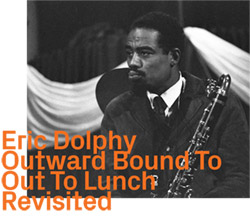
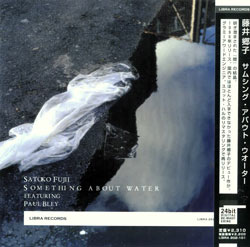
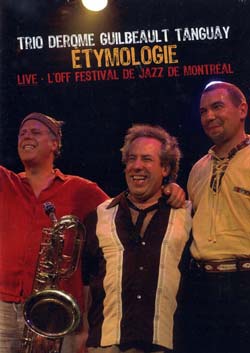
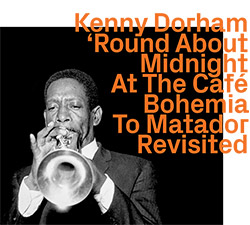
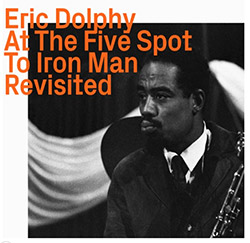



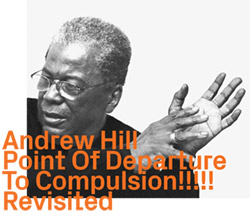


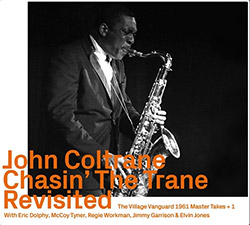



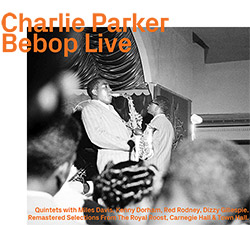

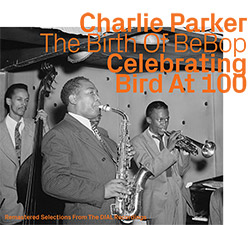
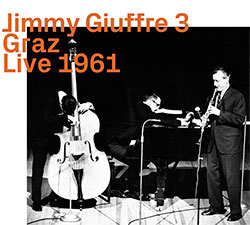

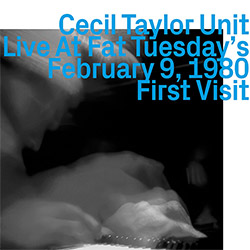
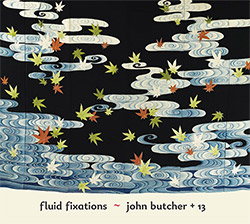
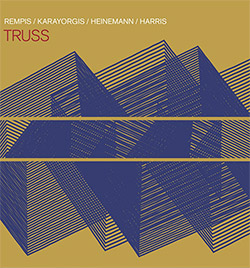

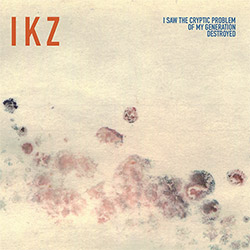














![Barker / Parker / Irabagon: Bakunawa [VINYL]](https://www.teuthida.com/productImages/misc4/35533.jpg)
![Blaser, Samuel / Marc Ducret / Peter Bruun: Dark Was The Night, Cold Was The Ground [VINYL 10-inch]](https://www.teuthida.com/productImages/misc4/35492.jpg)










![Warren, Kenny (Warren / Hoffman / Ellman): Sweet World [VINYL]](https://www.teuthida.com/productImages/misc4/35451.jpg)


![Blake, Ran / Dave Knife Fabris: Live Amsterdam 2006, First Visit [CD + POSTCARDS]](https://www.teuthida.com/productImages/misc4/35275.jpg)
![Sanna, Claudio: Compositori Sardi Contemporanei II [2 CDs]](https://www.teuthida.com/productImages/misc4/35317.jpg)












![Nevai, Nandor: <<The PRICE of FRONTIER>> Book 1: FULK [BOOK + 4 CDs]](https://www.teuthida.com/productImages/misc4/35464.jpg)
![Nevai, Nandor: <<The PRICE of FRONTIER>> Book 2: MARTIAL [BOOK + 4 CDs]](https://www.teuthida.com/productImages/misc4/35465.jpg)
![Nevai, Nandor: <<The PRICE of FRONTIER>> Book 3: JASSOM [BOOK + 4 CDs]](https://www.teuthida.com/productImages/misc4/35466.jpg)
![Nevai, Nandor: <<The PRICE of FRONTIER>> Book 4: HARD-WON [BOOK + 4 CDs]](https://www.teuthida.com/productImages/misc4/35467.jpg)

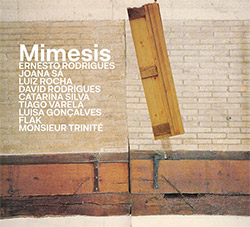




![DNS: Taking Big Bites Of The Khandas Three Cafes Deep [2 CDs]](https://www.teuthida.com/productImages/misc4/35334.jpg)




![Cleaver, Gerald: The Process [VINYL]](https://www.teuthida.com/productImages/misc4/34966.jpg)




![Alva Noto: HYbr:ID II [VINYL 2 LPs]](https://www.teuthida.com/productImages/misc4/35201.jpg)

![Baron, Derek / Luke Martin: Distinct and Concealed [CASSETTE + DOWNLOAD]](https://www.teuthida.com/productImages/misc4/35079.jpg)

![Lyle, Erica Dawn : Colonial Motels [CASSETTE + DOWNLOAD]](https://www.teuthida.com/productImages/misc4/35080.jpg)







![Alva Noto: HYbr:ID III [VINYL 2 LPs]](https://www.teuthida.com/productImages/misc4/35011.jpg)
![Kubisch, Christina / Trondheim Voices: Stromsanger 2022 For Six Voices And Electromagnetic Waves [VINYL]](https://www.teuthida.com/productImages/misc4/34628.jpg)








![Zurria, Manuel: Fame di Vento [3 CDs]](https://www.teuthida.com/productImages/misc4/35167.jpg)

![Granberg, Magnus / Nattens Inbrott / Skogen: Holde Traume, Kehret Wieder! [2 CDs]](https://www.teuthida.com/productImages/misc4/35038.jpg)
![Frey, Jurg: Outermost Melodie [2 CDs]](https://www.teuthida.com/productImages/misc4/35039.jpg)

![Pavone, Jessica: Reverse Bloom [VINYL]](https://www.teuthida.com/productImages/misc4/34895.jpg)




![Modney (Modney / Wooley / Gentile / Roberts / Pluta / Symthe / ...): Ascending Primes [2 CDs]](https://www.teuthida.com/productImages/misc4/34852.jpg)








![Elephant9 with Terje Rypdal: Catching Fire [VINYL 2 LPs]](https://www.teuthida.com/productImages/misc4/35355.jpg)
![Deerlady (Obomsawin, Mali / Magdalena Abrego): Greatest Hits [VINYL]](https://www.teuthida.com/productImages/misc4/34876.jpg)




![Haino, Keiji: Black Blues [2 CDs]](https://www.teuthida.com/productImages/misc4/35109.jpg)



![Surplus 1980: Illusion of Consistency [CD]](https://www.teuthida.com/productImages/misc4/35069.jpg)
![Staiano, Moe: Away Towards the Light [VINYL + DOWNLOAD]](https://www.teuthida.com/productImages/misc4/35037.jpg)
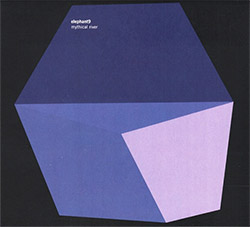



![Caveira (Gomes / Sousa / Abras / Ferrandini): Ficar Vivo [VINYL]](https://www.teuthida.com/productImages/misc4/34643.jpg)
![Gregg, J. J. / David Van Auken: Lunar Prairie [CD w/ DOWNLOAD]](https://www.teuthida.com/productImages/misc4/34611.jpg)

![Coultrain: Mundus [VINYL]](https://www.teuthida.com/productImages/misc4/32439.jpg)
![Mattin: Songbook #6 [VINYL]](https://www.teuthida.com/productImages/misc4/27317.jpg)
![Punkappella: Wake Up [7-inch VINYL]](https://www.teuthida.com/productImages/misc4/17519.jpg)
![Residents, The: WARNING: UNiNC.: Live And Experimental Recordings 1971-1972 [VINYL 2 LPs]](https://www.teuthida.com/productImages/misc4/31521.jpg)
![Coultrain: Phantasmagoria [VINYL]](https://www.teuthida.com/productImages/misc4/30142.jpg)
![Lennon, Sean Ono: Asterisms [VINYL]](https://www.teuthida.com/productImages/misc4/34517.jpg)

![Rotem Geffen: The Night Is The Night [VINYL]](https://www.teuthida.com/productImages/misc4/34631.jpg)
![Coley, Byron: Dating Tips for Touring Bands [VINYL]](https://www.teuthida.com/productImages/misc4/17906.jpg)

![Lost Kisses: My Life is Sad & Funny [DVD]](https://www.teuthida.com/productImages/misc4/lostKissesDVD.jpg)